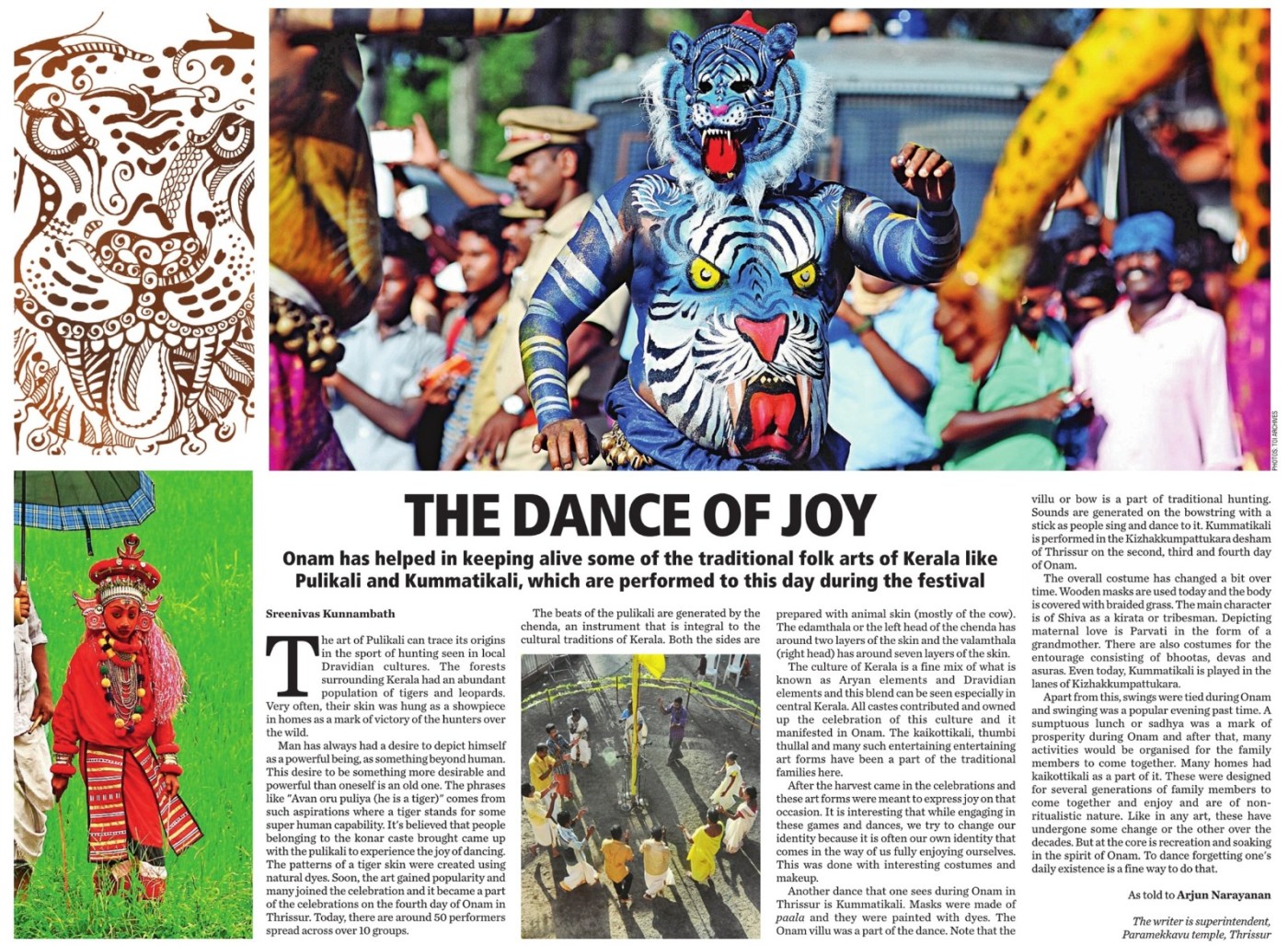The art of Pulikali can trace its origins in the sport of hunting seen in local Dravidian cultures. The forests surrounding Kerala had an abundant population of tigers and leopards. Very often, their skin was hung as a showpiece in homes as a mark of victory of the hunters over the wild.
Man has always had a desire to depict himself as a powerful being, as something beyond human. This desire to be something more powerful than oneself is an old one. Phrases like “Avan oru puliya (he is a tiger)” come from such aspirations where a tiger stands for some super human capability. It’s believed that people belonging to the konar caste came up with the pulikali to experience the joy of dancing. The patterns of a tiger skin were created using natural dyes. Soon, the art gained popularity and many joined the celebrations and soon, it became a part of the celebrations on the fourth day of Onam in Thrissur. Today, there are around 50 performers spread across over 10 groups.
The beats of the pulikali are generated by the chenda, an instrument that is integral to the cultural traditions of Kerala. Both the sides are prepared with animal skin (mostly of the cow). The edamthala or the left head of the chenda has around two layers of the skin and the valamthala (right head) has around seven layers of the skin.
The culture of Kerala is a fine mix of what is known as Aryan elements and Dravidian elements and this blend can be seen especially in central Kerala. All castes contributed and owned up the celebration of this culture and it manifested in Onam. The kaikottikali, thumbi thullal and many such entertaining entertaining art forms have been a part of the traditional families here.
After the harvest came, the celebrations and these art forms were meant to express joy on that occasion. It is interesting that while engaging in these games and dances, we try to change our identity because it is often our own identity that comes in the way of us fully enjoying ourselves. This was done with interesting costumes and makeup.
Another dance that one sees during Onam in Thrissur is Kummatikali. Masks were made of paala and they were painted with dyes. The Onam villu was a part of the dance. Note that the villu or bow is a part of traditional hunting. Sounds are generated on the bowstring with a stick as people sing and dance to it. Kummatikali is performed in the Kizhakkumpattukara desham of Thrissur on the second, third and fourth day of Onam.
The overall costume has changed a bit over time. Wooden masks are used today and the body is covered with braided grass. The main character is of Shiva as a kirata or tribesman. Depicting maternal love is Parvati in the form of a grandmother. There are also costumes for the entourage consisting of bhootas, devas and asuras. Even today, Kummatikali is played in the lanes of Kizhakkumpattukara.
Apart from this, swings were tied during Onam and swinging was a popular evening past time. A sumptuous lunch or sadhya was a mark of prosperity during Onam and after that, many activities would be organised for the family members to come together. Many homes had kaikottikali as a part of it. These were designed for several generations of family members to come together and enjoy and are of non-ritualistic nature. Like in any art, these have undergone some change or the other over the decades. But at the core is recreation and soaking in the spirit of Onam. To dance forgetting one’s daily existence is a fine way to do that.
As told to Arjun Narayanan by Sreenivas Kunnambath, superintendent, Paramekkavu temple, Thrissur

Leave a comment